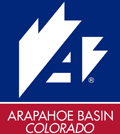Know Before You Go, the Basics of Avalanche Safety
Avalanches are a clear and present danger in mountain country.
Over the past 10 winter seasons, 270 people — including skiers, snowboarders, hikers, climbers and snowmobilers — have died in avalanches in the United States. And though the 2017-18 season has barely begun, at least one person already has perished in a snow slide.
While a great majority of those deaths were the result of back-country activities, 25 skiers and snowboarders were killed in “in-bounds” incidents at ski resorts.
So it behooves all of us to be properly versed in all things avalanches.
Get the Gear
The first step in helping to mitigate being another avalanche statistic is have the basic tools for the occasion:
A transceiver, to home in on a buried partner or to home in on you if you are caught in the slide.
A probe, to find the exact location and depth of the buried person.
A shovel, to help extricate said person.
Get the Forecast
There are several Web sites that provide weather and avalanche-danger forecasts for those venturing into the back-country.
The Sierra Avalanche Center (sierraavalanchecenter.org) provides data for the Sierra from just north of Truckee to south of Mammoth.
The Colorado Avalanche Information Center (avalanche.state.co.us) has updates for all ranges in the Centennial State.
The mountains of western Wyoming are under the watch of jholeavalanche.org and the Wasatch and Uintas of Utah are the responsibility of Utah Avalanche Center (utahavalanchecenter.org).
Montana has three different agencies conducting potential avalanche hazards: mtavalanche.com for the south central part of the state, missoulaavalanche.org for the southwest portion and flatheadavalanche.org for the north.
The mountains of Idaho are watched over by idahopanhandleavalanche.org in the north, payetteavalanche.org in the west-central and sawtoothavalanche.com in the east-central.
The Olympic range, the Washington Cascades and the Mt. Hood area are monitored by the Northwest Avalanche Center (nwac.us).
Get the Training
The best way to put the previous information to use is learn from the pros.
And the best resource to find the proper one to fit your needs and/or locale is the Colorado-based American Institute for Avalanche Research and Education, whose very informative Web site (aiare.org) includes a directory of avalanche hazard management clinics and seminars conducted by the above entities and other back-country-oriented firms from Maine to California.
Let’s be safe out there and not another statistic.
Featured Resorts

Salt Lake Ski Super Pass

Mammoth Mountain

Palisades Tahoe

Arapahoe Basin

Aspen Snowmass

Killington Resort

Grand Targhee Resort

Jackson Hole Mountain Resort

